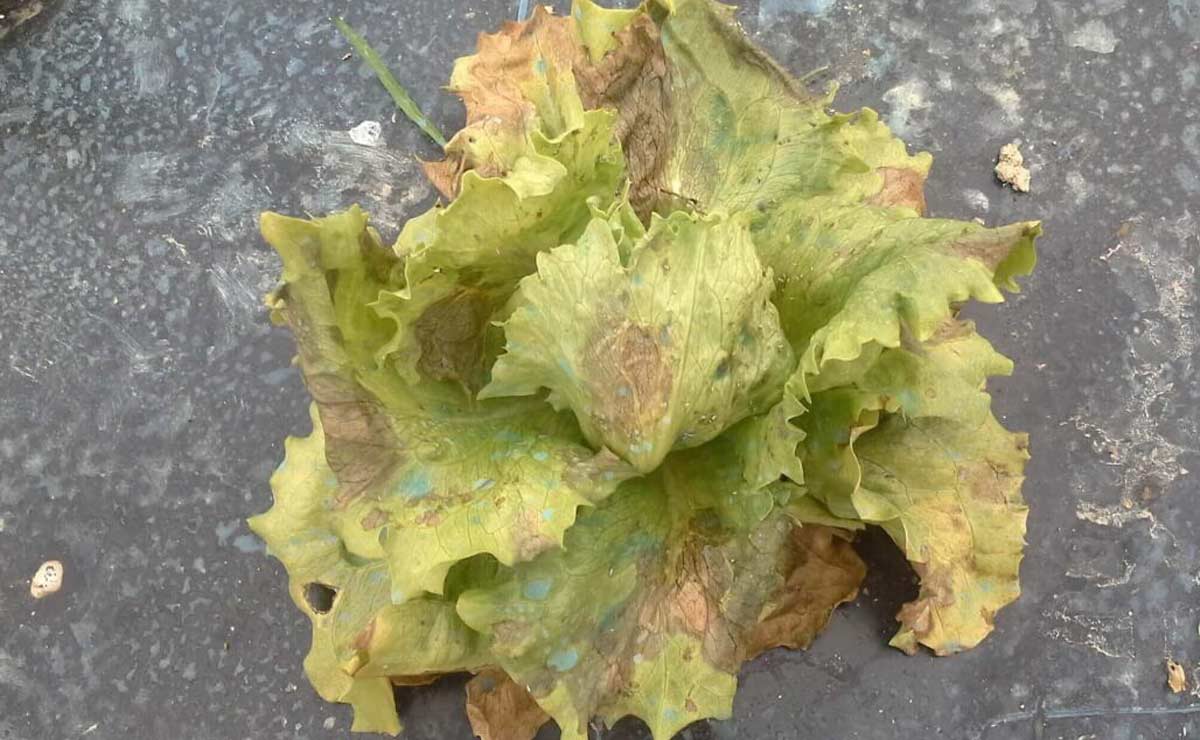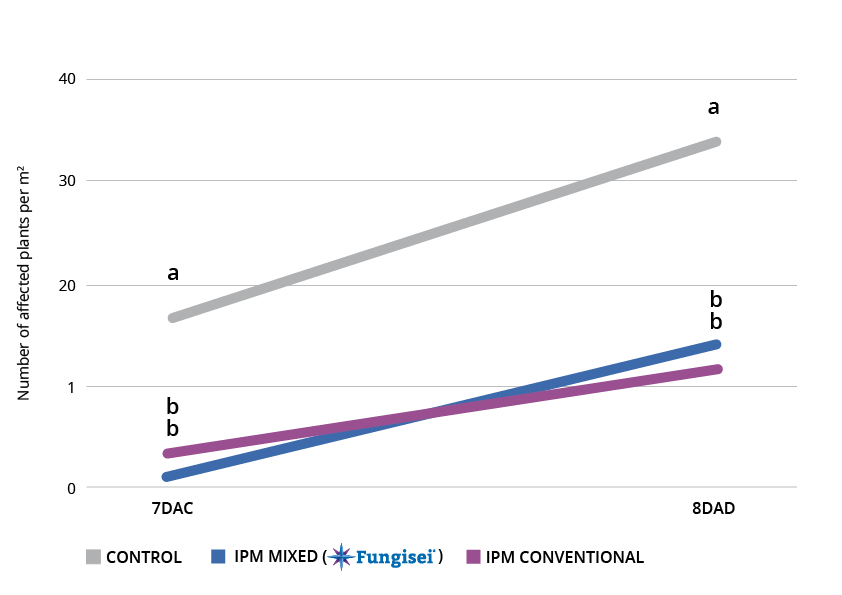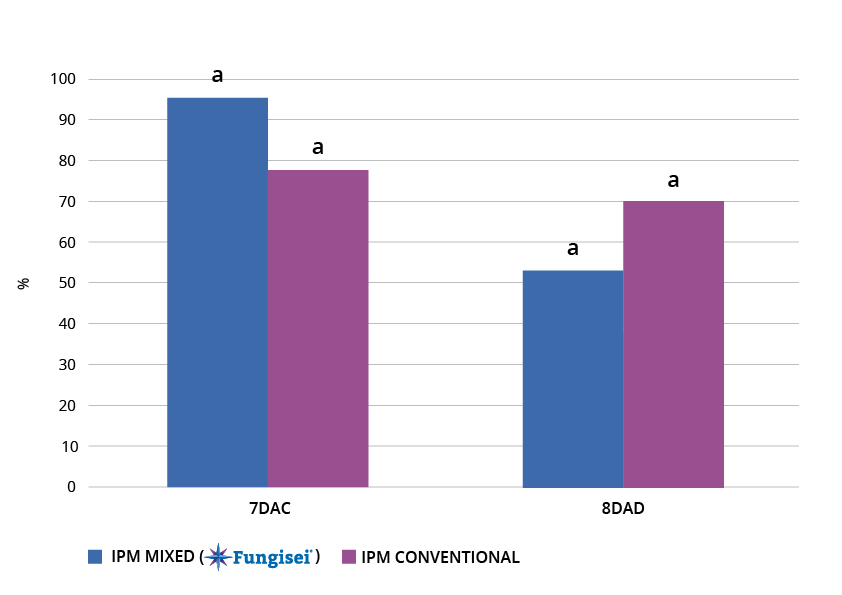Lettuce diseases: prevention and control strategies

Lettuce affected by downy mildew attack
Of all the lettuce diseases, downy mildew is one of the most restrictive, common and dangerous. It is a disease that can affect the plant at any stage of growth and has a very wide and prolonged window of incidence.
Although Bremia lactucae, the scientific name by which we know this disease of lettuce, can develop over long and extended periods of time, it is quite common to find it from autumn to spring or even in the early months of summer.
Downy mildew, one of the most common lettuce diseases, prefers wet weather, cloudy and overcast skies, high humidity and temperatures between 10 and 25º.
In other words, we are dealing with a fungus that adapts quite well to almost any temperature not exceeding 30° and that can be found both outdoors and in greenhouses.
Visually, downy mildew has a fairly clear symptomatology. In addition to the chlorotic spots on the upper surface of the leaves, one of the most characteristic symptoms of this lettuce disease is the appearance of a kind of whitish, floury powder on the underside of the leaves, which can sometimes be mistaken for something foreign to the plant.
Lettuce downy mildew can also appear on lettuce seedlings in the form of the same whitish mould, which gradually turns yellow. In all cases the outcome is the same: the leaves dry and die off prematurely.
This is one of the fastest spreading lettuce diseases. Once the disease has broken out and infected the plant, Bremia lactucae produces new spores that spread the disease within 5 to 7 days.
With this type of lettuce disease and conditions that allow the disease to develop over a relatively long period of time, preventive treatments against downy mildew are essential.
Biofungicides against lettuce diseases
This is where Fungisei comes into play; Fungisei is a broad-spectrum microbiological fungicide developed by Seipasa from a highly effective and pure strain of Bacillus subtilis that acts forcefully at the earliest stages of the disease.
The action of Fungisei prevents the growth of the pathogen and works by disrupting the fungal cell membrane and promoting the induction of systemic resistance (ISR) mechanisms in the plant.
This can be seen in figure 1, which shows the results of the efficacy trial carried out on lettuce. The findings show Fungisei’s ability to halt and control disease progression with an 80% reduction in chemical treatments.
The inclusion of Fungisei in the mixed strategy allowed the replacement of two applications of chemically synthesised active substances compared to the conventional strategy, without any difference in the results obtained and in a context of increasing disease pressure.
Figure 1: Pest incidence (downy mildew). Number of infected plants/m2.
Within the same trial, figure 2 focuses on the efficacy of the two strategies. The data show that at a point in time (8DAD) when the disease pressure is multiplied by 2, the effectiveness of the mixed strategy is not significantly different from the conventional strategy and manages to reduce the chemical load of the treatments by 80%.
Figure 2. Efficacy (%) calculated from the pest incidence.
Fungisei is a solution developed on the basis of Furity technology, an exclusive and patented formulation that takes the form of a molecular structure capable of protecting the active ingredient, ensuring its stability and homogeneity and maximising its efficacy once applied to the crop.
Another major advantage of the product is that it prevents the development of resistance, confirming its inclusion in the BM02 group of the FRAC (Fungicide Resistance Action Committee).
In addition, Fungisei has no safety period and can therefore be applied immediately before harvest without leaving chemical residues on the crop. The active ingredient is classified as Low Risk by the European Commission.
Preventive measures
Cultural practices to prevent downy mildew, one of the main lettuce diseases, also include increasing the distance between planting frames at the most susceptible times, improving aeration and using varieties that are more resistant to the different types of downy mildew in lettuce.











